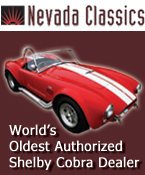 
 Main Menu
Main Menu
|
 Nevada Classics
Nevada Classics
|
 Advertise at CC
Advertise at CC
|
 December 2025
December 2025
|
| S |
M |
T |
W |
T |
F |
S |
| |
1 |
2 |
3 |
4 |
5 |
6 |
| 7 |
8 |
9 |
10 |
11 |
12 |
13 |
| 14 |
15 |
16 |
17 |
18 |
19 |
20 |
| 21 |
22 |
23 |
24 |
25 |
26 |
27 |
| 28 |
29 |
30 |
31 |
|
|
|
|
 CC Advertisers
CC Advertisers
|
|

04-06-2009, 10:50 AM
|
 |
CC Member

|
|
|
Join Date: Jul 2005
Location: Virginia Beach, Va & Port Charlotte, Fl.,
Posts: 2,292
|
|

 Not Ranked
Not Ranked
Quote:
Originally Posted by 427 S/O

undy: 7K rpm 'theory'?.....I really don't want to take the time for a history lesson, best you do that yourself.
|
..the "theory" being that every S/O experienced 7K rpm and lived to talk about it, not just NASCAR engines. Even back then they received x-tra prep. Save yer history lessons for the uninformed..
__________________
Too many toys?? never!
|
-
Advertising


04-06-2009, 11:02 AM
|
 |
CC Member

|
|
|
Join Date: Jul 2005
Location: Virginia Beach, Va & Port Charlotte, Fl.,
Posts: 2,292
|
|

 Not Ranked
Not Ranked

Quote:
Originally Posted by Dcmgt

With all the touting of newly produced FE parts, everyone seems to be forgetting the biggest shortcomings. These new engine parts are often produced by small outfits which don't have the resources or production volumes don't support the level of extensive QA that Ford had. The inspector at these shops can often be the owner or has to report to the owner and what gets let out the door will be correlated with how profits are going.
Even when parts are coming out looking pretty good, they still usually have more variability than OE Ford parts. For example, I've seen at my local engine builder how you often have to play games with the new parts like elongating pushrod holes in intakes because of interference, which is far more rare in OE parts.
From what I've seen designs of new aftermarket parts are also typically not developed to the same degree as OE items with the same diverse group of highly educated & skilled engineers and technicians from various disciplines (structural experts, metallurgists, etc). Sure, certain areas of the new parts have been beefed up, but that is often accompanied by alot of extra material where it isn't necessary. For example, I've seen numerous Blue Thunder heads at my local engine guy's shop and the general production quality looks decent (better than Dove), but they are so porky with excess aluminum it's not funny. That approach wouldn't make it far in F1 circles.
For what the original 427 engine was intended for, less than 500hp but usually good for at least 600, it's hard to beat the product. There are just a few areas (like rod bearings a bit too large in diameter and too narrow, which is primarily responsible for the windowed blocks) that if addressed make it a nice engine - and most of that stuff was being corrected by race teams back in the 60's, like using Chrysler rod bearings. The biggest problem with the old parts is finding anything decent left, as Keith has mentioned. All the problems you can experience with a new aftermarket part can sometimes negate the advantages.
|
I guess I need to tell my builder to dump his 5 axis CNC block machine and start looking for the "accurate" Ford core-shift specials.. I'd heard for every "good" 427 block that was made one went back at the factory for scrap and melt down due to tolerance/casting inconsistencies. I'll take any knowledgeable qualified, CNC equipped shop over Ford of yester-year (60s & 70s). For quality, metallurgy and a host of reasons.
Dave
__________________
Too many toys?? never!
|

04-06-2009, 11:57 AM
|
|
CC Member

|
|
|
Join Date: Aug 2007
Cobra Make, Engine: 31XX Car
Posts: 374
|
|

 Not Ranked
Not Ranked
 New Part Problems
New Part Problems
Quote:
Originally Posted by undy

I guess I need to tell my builder to dump his 5 axis CNC block machine and start looking for the "accurate" Ford core-shift specials.. I'd heard for every "good" 427 block that was made one went back at the factory for scrap and melt down due to tolerance/casting inconsistencies. I'll take any knowledgeable qualified, CNC equipped shop over Ford of yester-year (60s & 70s). For quality, metallurgy and a host of reasons.
Dave
|
Those 5 axis CNC machines didn't stop Genesis from sending slews of mis-machined blocks to all sorts of engine shops - among a number of problems, cam tunnels were so bad they came in from one end half way and then from the other end to meet up and they were off some horrendous amount! The important aspect is shops like Genesis, Dove, etc send stuff out like this, vs Ford would tend to catch this so that when you received a part it would go together without jumping through major hoops.
Core shift is a tolerance just like any other dimension and parts at large companies like Ford that end up outside the BP range are reviewed by educated specialists to determine whether they are acceptable to send out as is, rework or scrap......I would rather have that scenario than a high school educated machinist at a small shop with a relatively narrow scope of experience to be making such calls. Whether it be aircraft or autos, parts are custom selected for the most demanding applications and always have been. Presidential aircraft are not allowed to use components that have been through the "MRB" (Material Review Board) because of non-conformities and even the best automotive race engine parts made today are individually inspected and picked by the top NASCAR teams.
There is alot of BS out in the automotive field. I did some fairly extensive research and analysis of rocker arms for a vintage factory Shelby American race engine I recently finished. The general philosophy with the engine was to stay as stock as possible, but not expose myself to excessive risk that could destroy castings, etc that could not be replaced. My initial thought was to go with a steel roller tip rocker, but after multiple spread sheets of rocker kinematics, mock ups and phone conversations with the top designers at most of the rocker arm companies, leading race engine shops (incl NASCAR and an F1 designer) and others, the stock Ford rocker surfaced as the best solution - just with some minor tweaks like polishing, different adjuster and special coatings. It turns out that roller tips do initially roll, but as engine speed increases, the inertia of the roller tip going in one direction can't be immediately stopped and started in the opposite direction, so they skid. This negates the benefit and puts excessive contact stresses on the valve tip due to the much more localized point contact of the relatively small radius roller. In addition, the extra mass of the roller and it's supporting structure force you to run notably more spring pressure to reach the same RPM.....which puts more stress on the rest of the valvetrain components. If you look at the rocker arms used by the top NASCAR teams, they are very similar to the almost 50 year old FE part being made out of a steel alloy with a pad tip and "fin" on the backside as the most efficient way to generate stiffness. One top designer at a rocker arm company said he doesn't want his identity revealed, but they mainly offer roller tip rockers (often aluminum, which is not good for this) to meet demand from the low buck engine builders who aren't able to determine optimal configurations.

|

04-06-2009, 05:51 PM
|
 |
CC Member

|
|
|
Join Date: Jul 2005
Location: Virginia Beach, Va & Port Charlotte, Fl.,
Posts: 2,292
|
|

 Not Ranked
Not Ranked
I'll have to agree, "as cast" the OEM s/o blocks are ready and machined properly for use right out of the box whereas the Genesis/Pond/Shelby requires skilled prep prior to it being useable. I guess my point would be that after proper prep by a skilled, properly equipped machine shop the aftermarket block would hold up to more abuse than an equally prepped OEM block. I think I read that the Shelby block's good to around 2000 ponies. It's not a side oiler design like Pond and Genesis though. We won't even talk Dove, as they wouldn't be a consideration.
The valve train info's very interesting. I'm sure spring loads, cam ramps, which oil, RPMs etc impact on the valve tip scuffing issue. Are you saying this applies to street driven engines at reasonable (6500 and below) RPMs? Fascinating though, thanks for the info.
__________________
Too many toys?? never!
|

04-06-2009, 06:55 PM
|
|
CC Member

|
|
|
Join Date: Aug 2007
Cobra Make, Engine: 31XX Car
Posts: 374
|
|

 Not Ranked
Not Ranked
 Rockers
Rockers
The choice of pad or roller tip is influenced by a number of factors and engine attributes. An assessment of valve scrub work vs cam rotation angle for your given design will reveal how effective the subject pad is for relative comparisons. Starting with a clean sheet of paper with today's technology, pads are typically complex splines to minimize scrub work (i.e. reducing it at higher loads) - which means old original rocker pads are probably not as optimized.
If an engine spends much of it's time at only maybe 2,000 rpm and is never taken to real high revs to where high spring pressure is not required, a roller tip is probably in its realm of being most beneficial. At this lower speed the roller tip may be predominantly rolling and reducing friction and therefore result in lower lateral valve stem loads (although even a pad would have much lower scrub work at lower spring loads). This may provide a very slight power and fuel mileage gain and increase valve guide life (a big problem with FE's) relative to an old design stock pad rocker, however the gains in power and mileage are probably very small and don't offset the increased cost and potential reliability issues, otherwise the car companies would have jumped on board long ago by retrofitting it in all passenger cars. Power increases that some manufacturers claim from installation of their roller rockers I believe is primarily due to a rocker geometry which results in greater valve lift at lower cam lifts (effectively increasing duration) - you may have heard of this aspect referred to as "mid lift" optimized rockers.
One of my big concerns was valve guide life, given the miles that can rack up in street use. I have previously run FE's for enough years to know the guides wear relatively soon with higher spring pressures. The solution I chose with the stock pad tip rocker was to apply special low friction coatings to the rocker shaft, stock rocker tip and entire valve (incl tip) to reduce friction to hopefully a benign level....and rocker to shaft bearing mode life should be accordingly enhanced.
Two other concerns are rocker strength and geometric ability to handle the valve lifts employed. In large part by keeping components light, I've been able to keep max spring loads safely below 500lb, such that with polishing I believe fatigue is not a major problem with the stock part. If you have much higher spring load, you will be forced into using an aftermarket rocker arm, which for the most part are all roller tip for the FE (excluding some excessively heavy pad rockers by Crane or whoever).
The pad tip can be problematic if you exceed the design operating lift parameters. Even though my cam profile is within the envelope of the top factory race grinds used back in the 60's, the rocker rotates enough at max lift for the pad to ride right to it's edge. Aside from undesirable point loading if gone too far, scrub can go up dramatically if the contact point reverses direction in this regime. The stock rocker looks ok to maybe .650" lift (pushing it), so if you have higher lift you need to reconsider options. By the way, I'm referring to actual net valve lift, not to be confused with lift erroneously calculated by using "1.76" times cam lift after lash. A custom pad rocker can no doubt be designed to encompass higher lifts and spring loads, although the cost would be prohibitively excessive for most people on a low volume basis. Aside from avoiding the expense of doing that, I'm happy I was able to maintain using original parts with my configuration.
Last edited by DMXF; 04-06-2009 at 07:27 PM..
|

04-06-2009, 07:11 PM
|
 |
CC Member

|
|
|
Join Date: Oct 2002
Location: Eagle,
Ne.
Cobra Make, Engine: 1966 Lone Star 427SC.
Posts: 4,310
|
|

 Not Ranked
Not Ranked
I have another thought with oil delivery. With the FE, most engines builders including myself, blocked off the oiling to the heads, thus more can go below. The side oiler is reversed, do we leave the heads un-plugged so the top end gets enough oil ?
__________________
Regards,
Kevin
|

04-07-2009, 07:04 AM
|
|
CC Member

|
|
|
Join Date: Jul 2003
Location: West Bloomfield,
MI
Cobra Make, Engine:
Posts: 717
|
|

 Not Ranked
Not Ranked

Those OE 427 blocks from the 60's were selected or scrapped, and very often repaired at the factory before they ever made it to the door. I've seen them with individual lifters bushed, odd sized bearings, and with weld or epoxy repairs in non-critical areas. I've seen cylinders so thin you'd swear you could use them as a lace curtain. Any machining issues were doubtless corrected before assembly - you would never know if they'd been pulled from the line and rehoned, line honed, decked or whatever. A volume OE casting and machining plant melts it's scrap. Modern SPC processes and cost containment methodology did not apply to that era.
The NASCAR and in particular LeMans programs were doubtless based on custom and/or hand selected/inspected parts at every level of the assembly. I have seen some very interesting internal components from that program that were far outside of the realm of "normal" FE pieces - and could still be considered radical designs today. Ever see a "forked" pin end connecting rod?
I suspect that the primary driver for the non-roller tip NASCAR rockers is weight reduction at the valve end. I tend to agree that the roll couple at the tip is quite small, but do not see how directional reversal inertia could be much of an issue due to that short travel - perhaps .080". The benefit of the roller tip lies in the pivot function - reducing side load imparted to the valve tip. Skidding or scrubbing is most likely the result of uncontrolled valve bounce taking the roller out of contact with the valve. Reducing the weight would help with high RPM valve control - something of a "Devil's agreement"...
__________________
Survival Motorsports
"I can do that....."

Engine Masters Challenge Entries
91 octane - single 4bbl - mufflers
2008 - 429 cid FE HR - 675HP
2007 - 429 cid FE MR - 659HP
2006 - 434 cid FE MR - 678HP
2005 - 505 cid FE MR - 752HP
|

04-07-2009, 08:08 AM
|
|
CC Member

|
|
|
Join Date: Aug 2007
Cobra Make, Engine: 31XX Car
Posts: 374
|
|

 Not Ranked
Not Ranked

Quote:
Originally Posted by Barry_R

I suspect that the primary driver for the non-roller tip NASCAR rockers is weight reduction at the valve end. I tend to agree that the roll couple at the tip is quite small, but do not see how directional reversal inertia could be much of an issue due to that short travel - perhaps .080". The benefit of the roller tip lies in the pivot function - reducing side load imparted to the valve tip. Skidding or scrubbing is most likely the result of uncontrolled valve bounce taking the roller out of contact with the valve. Reducing the weight would help with high RPM valve control - something of a "Devil's agreement"...
|
Barry - Sounds like you're exaggerating the production problem rate of the blocks a bit! Not that I'm naive to the likely anomalies, but unless you've been there when it was being done back in the day, it's also difficult to know what repairs weren't done after the fact (just like people bad mouth original Cobra production quality, when the vast majority of issues were done by people working on the cars subsequent to delivery). I've been into FE powered Ford cars for about 30 years myself, so seen a few virgin FE's in my day too.
You should come up with a test rig and verify rocker roller tip skidding for yourself, it would just need to be fairly sophisticated to see the small relative motions. I've been told by multiple leading edge engine developers that lab testing has shown the roller tip to skid progressively more as engine speed goes above 2,000 rpm, depending on individual engine attributes. As skidding occurs, the side load on the valve is the same or worse than a pad rocker at the same point in the lift curve (usually worse, because a good design pad tends to rock across the tip). I know the engineer responsible for the new Vette Z06/ZR1 valve train design and he said they went through all the vacillations/testing of evaluating whether to go with a roller tip and went with the pad - in spite of the fact that the rest of the engine has all the trick high buck things like Titanium con rods and intake valves, lightweight pistons, roller lifters, etc.
By the way, while people think the FE is so antiquated, it may be interesting to note that the Z06 rocker is virtually the same ratio and offset, weight, inertia and, of course, pad design as the 427 Ford. In fact, you can go through the whole design of the Z06/ZR1 engine and it seems almost certain the GM engineers had an FE there during development: Valve head diameters within about .010" of 427's, hollow stem sodium filled steel exhaust valves just like the 427, bore and stroke almost identical to the 428 Ford, Titanium retainers vs. aluminum retainers used by Shelby American on team car engines, valve inclinations/layout similar to the FE with spark plug angled toward the exhaust valve just like the FE, roller lifters similar to roller lifters that Shelby American used in their top of the line race engines back in the day, lifter diameter increased to I believe FE diameter from the smaller size used in earlier Chevy small blocks (smaller lifter is a problem in achieving higher cam ramp rates), heart styled combustion chambers similar to the aluminum comp Cobra HR head, <individual> shaft mounted rockers similar to the FE (in line, GM just left out the extra material in between), dry sump utilizing the stock internal pressure oil pump just like the original Cobra setup, crank main thrust bearing move to the middle of the engine like an FE from the rear that earlier Chevy's had, distributor moved from the back to the front like an FE, intake and exhaust ports spread like Ford engines, cross bolted main caps with skirted block like the 427, cylinder head bolt pattern so close to the small block Ford that I've been told all you need to do is slightly elongate the holes in the head to swap heads between engines, tuned IR runners with FI which is the evolution of the tuned IR 58mm weber setup of the Cobra team comp car engines, aluminum block and heads just like the Cobra big block team cars had been originally planned, overall weight of the Z06 engine within about 10lb of the comp Cobra aluminum team car engine with 58mm webers and dry sump, 7100rpm redline vs the "7,000 rpm kit" hollow valve comp/MR/HR engines Cobras had back in the day, and probably a host of other attributes. It sure is interesting how both engines ended up so similar when you consider the fact that the Corvette engineers employed all the modern, sophisticated tools like FEM and CFD.
Most of the differences in the newer engines focus on subtle refinement details, like valve coatings, harder guides, better sealing rings, etc.
Last edited by DMXF; 04-07-2009 at 09:17 AM..
|

04-07-2009, 10:57 AM
|
 |
Senior Club Cobra Member

|
|
|
Join Date: Jan 1999
Location: MARKSVILLE,LA.,,
Posts: 3,235
|
|

 Not Ranked
Not Ranked

Quote:
Originally Posted by 427 S/O

I'm reminded of the 60's 427 NASCAR engines, running 7K rpm for 3-4 hours with a standard coil, dual point distributor and cast iron rocker arms is unthinkable today. I've hit 7K RPM maybe 3-4 times in the 15K I have on my engine and I cringed every time.
I seriously doubt a today's FE 427 would do that much better, how could it?.
|
It was unthinkable then also.........Watched a NASCAR legends show a few weeks ago and Jr. Johnson,Ned Jarrett,Richard Petty,the Allison brothers and a few others all stated that they began to get real worried anytime the rpms got near 6,000 when they were running the 427's........During test sessions they would come in and ask for a rear gear change......they also showed old race clips where they would raise the hood during pit stops and add a couple of quarts of oil in the middle of a race!!!!!!!!!!!!the leading cause of cars falling out of races back then was Engine Failure not wrecks......In one race at Talladega almost half the field fell out with engine failure using the big blocks. the drivers said things changed dramatically when the switch to the small block engines were made, engine failures were cut in half right off the bat.............
David
__________________
DAVID GAGNARD
|

04-07-2009, 12:00 PM
|
 |
CC Member

|
|
|
Join Date: Oct 2002
Location: Eagle,
Ne.
Cobra Make, Engine: 1966 Lone Star 427SC.
Posts: 4,310
|
|

 Not Ranked
Not Ranked

David- I watched the same program. What a kick it was too see the old dogs racing and you could actually tell a difference between the car makes, not like today !
Anyway, what I've always believed is the big blocks (any manufacture) were mostly about producing huge torque numbers while the small blks. were for high rpm's. The good olé' 283 Chevy was one of the best high rpm engines ever produced.
When I built my Cobra years ago, I had to have a FE. When we built the 428, we were amazed by the ever climbing torque numbers !
A great friend of mine here on CC, told me with this side oiler build, not to worry about the HP, but build a torque engine. But, I know I will be disappointed if it does not make 600 + HP and TQ. I seriously doubt, mine will ever see over 6,500 rpm and maybe just 6,000 rpm. But, things can change. 
With the money it will cost, I have to build it for the street, cruising with occasional drag strip run, and a must,..... dependability !
As you all know, launching from a stop and high rpm's are the worst for any engine, including the new side oiler's, especially on the crank but more important, the valve train.
Here are a couple questions.
I have another thought with oil delivery. With the FE, most engines builders including myself, blocked off the oiling to the heads, thus more can go below. The side oiler is reversed, do we leave the heads un-plugged so the top end gets enough oil ?
And-
Going with a mechanical roller, with a yet to be determined high lift, the torture with the high valve spring pressure is a concern for longevity as well as the roller tip rockers.
I'm sure with the new technology we have today, the CNC head machining, higher quality seats, seals, valves and springs ect. What are some valve train recommendations for this modern,...... 482 side oiler build, and why ?
__________________
Regards,
Kevin
Last edited by FUNFER2; 04-07-2009 at 12:06 PM..
|

04-07-2009, 12:35 PM
|
 |
Senior Club Cobra Member

|
|
|
Join Date: Jan 1999
Location: MARKSVILLE,LA.,,
Posts: 3,235
|
|

 Not Ranked
Not Ranked
Quote:
|
Anyway, what I've always believed is the big blocks (any manufacture) were mostly about producing huge torque numbers while the small blks. were for high rpm's. The good olé' 283 Chevy was one of the best high rpm engines ever produced.
|
Agreed, the big block motors of of long ago where designed for low rpm, high torque output, used in trucks and big cars like the gaint station wagons fo t he day.......
My grandpa had a 65 Chevy pickup with a 283, 2V, three speed on the column and in the late 60's when I was driving I would regularly take off in 1st gear and hold my right foot to the floor till the motor "nosed over" before shifting to second. You couln't hurt that motor, after he died, my brother-in-law ended up with the truck and it probably had close to 200,000 miles on it when he got rid of it and it never had a head or the intake off!!!!!!!!!!! It had been well used and "abused" (by me mostly) most of it's life.........
David
__________________
DAVID GAGNARD
|

04-07-2009, 01:08 PM
|
|
CC Member

|
|
|
Join Date: Apr 2009
Cobra Make, Engine:
Posts: 3
|
|

 Not Ranked
Not Ranked

Having built both original Ford 427 side oilers and a Genesis 427 side oiler I have to disagree with the premise that the original Ford blocks were, in your words "ready and machined properly for use right out of the box". This is a mistake rookies often used to make. Ford NOS 427 blocks often had a few minor problems or even major ones. Lets face it, the 427 side oiler block is a difficult part to make even with today's technology.
In the old days union guys who were about to or just had been on strike were not subject to drug testing and they were not happy about their jobs. Ford's tooling was not always the best, some of the equipment at DIF was ancient and outdated even in 1966. They had a difficult time making enough 427 blocks to meet demand, despite the support of one of the world's biggest car companies.
Today you have (in the case of the Genesis, Shelby and Pond 427 blocks) a small group of dedicated professionals soberly building a product using better technology than the originals, including better machine tools and better control of cores and better iron mix control. You still find some quality issues, but I find they are no worse than Ford and possibly not as serious as some of the problems I have seen with original NOS 427 blocks.
The same is true of cylinder heads. An out of the box set of Edelbrock 427 heads is likely good enough to be considered better than an out of the box brand new set of 427 MR heads from 1967.
The only drawback I see to the new blocks is the additional 32 pounds in a Genesis block compared to the original Ford part.
Finally, bear in mind that the Ford GT-40 427 engines run at LeMans won without ever exceeding 6800 RPM.
Quote:
Originally Posted by undy

I'll have to agree, "as cast" the OEM s/o blocks are ready and machined properly for use right out of the box whereas the Genesis/Pond/Shelby requires skilled prep prior to it being useable. I guess my point would be that after proper prep by a skilled, properly equipped machine shop the aftermarket block would hold up to more abuse than an equally prepped OEM block. I think I read that the Shelby block's good to around 2000 ponies. It's not a side oiler design like Pond and Genesis though. We won't even talk Dove, as they wouldn't be a consideration.
The valve train info's very interesting. I'm sure spring loads, cam ramps, which oil, RPMs etc impact on the valve tip scuffing issue. Are you saying this applies to street driven engines at reasonable (6500 and below) RPMs? Fascinating though, thanks for the info. |

|

04-13-2009, 09:43 AM
|
 |
CC Member

|
|
|
Join Date: Oct 2002
Location: Eagle,
Ne.
Cobra Make, Engine: 1966 Lone Star 427SC.
Posts: 4,310
|
|

 Not Ranked
Not Ranked
Out of curiosity, lets try and get a head count of just how many of us would like to see this go into print in the magazine. I know that a lot of members won't see this post and add themselves to the head count but, it still would be interesting anyway.
I appreciate Keith & Barry's in-site and information as two of the best FE builder in the country. And to all of members that have added their point of view. 
Thanks to all of you. 
__________________
Regards,
Kevin
|

04-13-2009, 10:51 AM
|
 |
CC Member

|
|
|
Join Date: Jul 2001
Location: Senoia,
Ga.
Cobra Make, Engine: 427SO with big twin autolite inlines on custom intake, jag rear, top loader, wembeldon white, guardsmen blue stripes
Posts: 3,155
|
|

 Not Ranked
Not Ranked
Since none of the 'new' 427 S/O have run NASCAR at 7K rpm for 3-4 hours, as well as the 24 hours of Le Mans. A comparison would be speculative at best. I'll stand by my opinion that there wouldn't be that much difference.
__________________
Perry
Remember!, there's a huge difference between a 'parts' changer, and a mechanic.
|

04-13-2009, 11:01 AM
|
|
CC Member

|
|
|
Join Date: Jul 2008
Location: Driftwood,
TX
Cobra Make, Engine: Contemporary Cobra, 427 side oiler
Posts: 1,850
|
|

 Not Ranked
Not Ranked
Quote:
Originally Posted by FUNFER2

Out of curiosity, lets try and get a head count of just how many of us would like to see this go into print in the magazine. I know that a lot of members won't see this post and add themselves to the head count but, it still would be interesting anyway.
Thanks to all of you.  |
Add a poll to the thread. |

04-13-2009, 12:22 PM
|
 |
CC Member

|
|
|
Join Date: Oct 2002
Location: Eagle,
Ne.
Cobra Make, Engine: 1966 Lone Star 427SC.
Posts: 4,310
|
|

 Not Ranked
Not Ranked
Good idea. How do I add it to the post now, since I already posted ?
Thank you much,
Kevin
__________________
Regards,
Kevin
|

04-21-2009, 01:12 PM
|
|
CC Member

|
|
|
Join Date: Apr 2009
Cobra Make, Engine:
Posts: 3
|
|

 Not Ranked
Not Ranked

You are welcome to your opinion.
None of the "old" 427 blocks has won Hot Rod's Drag Week. Jay Brown has won it with a Genesis 427 though. He was close to winning it a second time last year and would have if there had been decent Cammer 427 rocker arms available.
No speculating here. The new side oiler blocks are made from better materials and the design has been improved upon. Again, referencing Pond, Genesis, or Shelby blocks, all of which are easily superior in a multitude of ways to any original side oiler block.
These new 427 blocks are not going to make any different amount of power if built identically to an original. A good rebuilt original is going to be just as reliable at the horsepower levels seen at Nascar back then or at Le Mans, say 550 horsepower. I doubt that anyone is going to build a pair of engines to the same specs just to satisfy posers who don't understand the question is already answered.
Quote:
Originally Posted by 427 S/O

Since none of the 'new' 427 S/O have run NASCAR at 7K rpm for 3-4 hours, as well as the 24 hours of Le Mans. A comparison would be speculative at best. I'll stand by my opinion that there wouldn't be that much difference.
|

|

04-21-2009, 01:30 PM
|
|
CC Member

|
|
|
Join Date: Apr 1999
Location: cleveland,
OH
Cobra Make, Engine: CSX4000, 427
Posts: 1,999
|
|

 Not Ranked
Not Ranked
I think there may be a horspower advantage of newer blocks, such that with thicker, stiffer cylinder walls may maintain their concentricity better, for better ring sealing, kind of like the benefit of boring/honing out a block with a torque plate.
__________________
"After jumping into an early lead, Miles pitted for no reason. He let the entire field go by before re-entering the race. The crowd was jumping up and down as he stunned the Chevrolet drivers by easily passing the entire field to finish second behind MacDonald's other team Cobra. The Corvette people were completely demoralized."
Last edited by Anthony; 04-22-2009 at 04:53 AM..
|

04-26-2009, 12:06 PM
|
|
CC Member

|
|
|
Join Date: Apr 2001
Location: Abe Lincolns Birthplace,
Ky
Cobra Make, Engine: CSX4761, KCR Shelby Alloy 496,760hp
Posts: 867
|
|

 Not Ranked
Not Ranked

I can see that newer technology and metalurgy methods have enabled us to make better blocks.
As far as the argument between new and old blocks it is a hard one to settle.Many of the old blocks today are worn out,sleeved or otherwise damaged/culled race parts. Most of those are the c8az-G service replacements from the 70's/80/s which arent close to the quality of the original 427 blocks in nickle content or bore alighment. Whats hard to see here is the superiority the 427 fe's held on the other big blocks of their era ,ie:BBC in which the 427's fe's usually prevailed.Although there were many 427's spun at and over 7k rpm of which some failed. Most of the failures were due to rod bolts and rods.I remember hearing Holman Moody xrayed even the good ford bolts out of the box and culled maybe 25% of brand new bolts due to flaws.The good old boy racers were buying over the counter parts and slapping them together not realizing with the head work and high octane fuel availiable they were making more power than the componets could stand.
There is no doubt in my mind that the new componets and new gen builders are making much better and stronger stuff,it is a shame ford dropped the program in the 70's and we couldnt have seen continual factory development of the fe.
The FE may not be the best engine of today ,but it is without doubt detroits best factory racer of it's day,IMHO
__________________
Tk
"this whole Adult thing just isnt working for me "
|

04-26-2009, 03:06 PM
|
 |
CC Member

|
|
|
Join Date: Dec 2002
Location: caledonia,
il
Cobra Make, Engine: #1459 w/460(sold)New(used),spf w/427s.o.(sold)
Posts: 578
|
|

 Not Ranked
Not Ranked
Mr. 1968,
2 posts and already your a know it all.  Gotta get that union slam in also even though it was 40yrs ago. I was told to edit what I prev. had written, but you may think the worst and then youd be correct!!
Last edited by sparks; 04-26-2009 at 05:28 PM..
|
 Posting Rules
Posting Rules
|
You may not post new threads
You may not post replies
You may not post attachments
You may not edit your posts
HTML code is Off
|
|
|
All times are GMT -7. The time now is 09:45 PM.
|

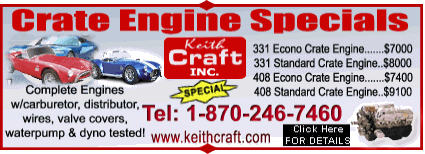


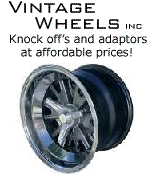
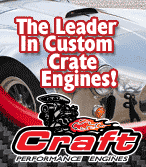

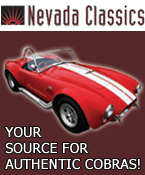
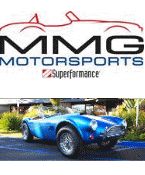
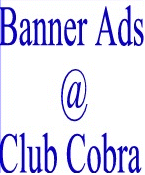


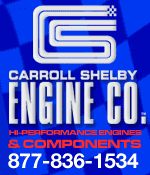











 Gotta get that union slam in also even though it was 40yrs ago. I was told to edit what I prev. had written, but you may think the worst and then youd be correct!!
Gotta get that union slam in also even though it was 40yrs ago. I was told to edit what I prev. had written, but you may think the worst and then youd be correct!! Linear Mode
Linear Mode



